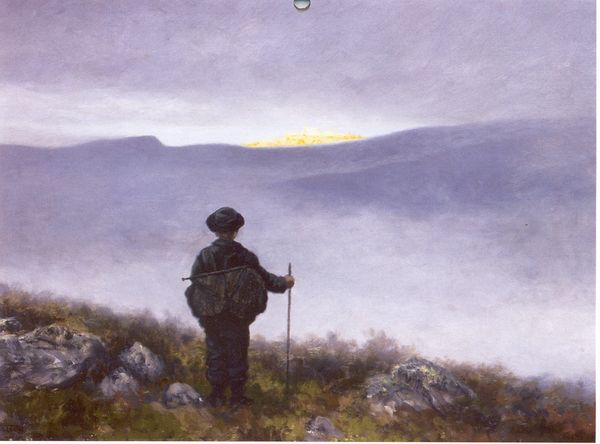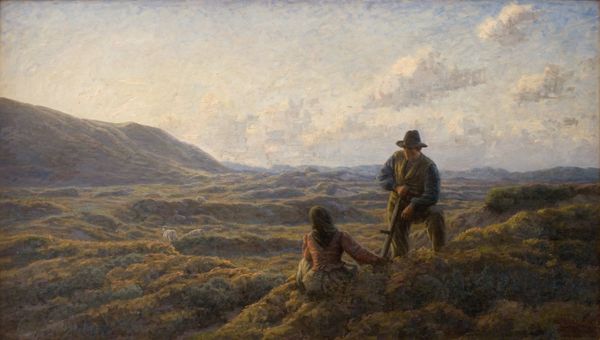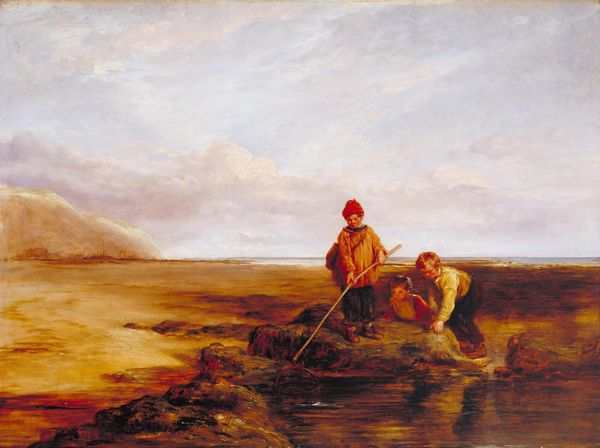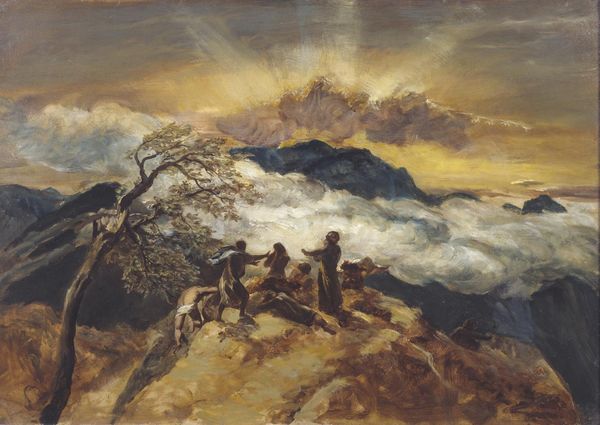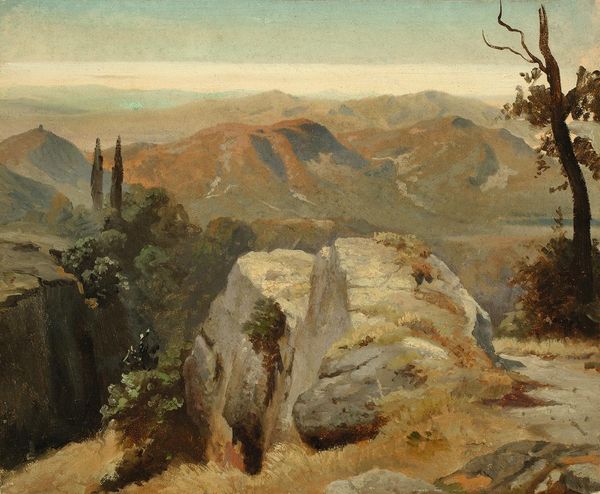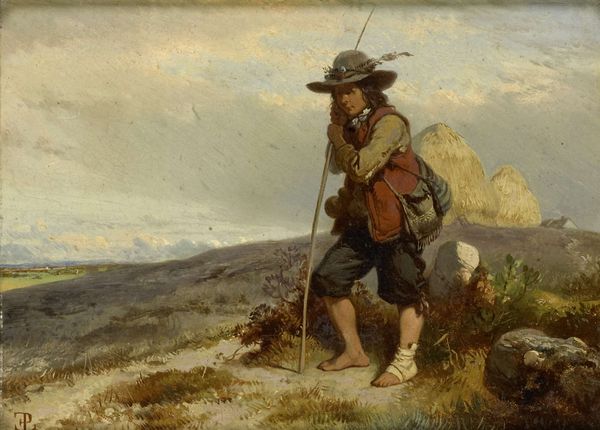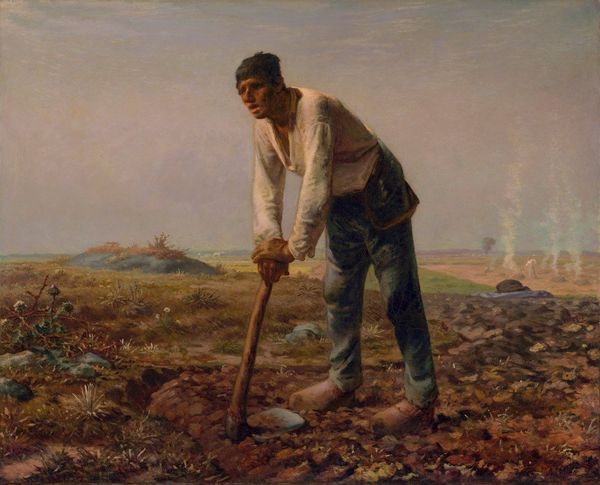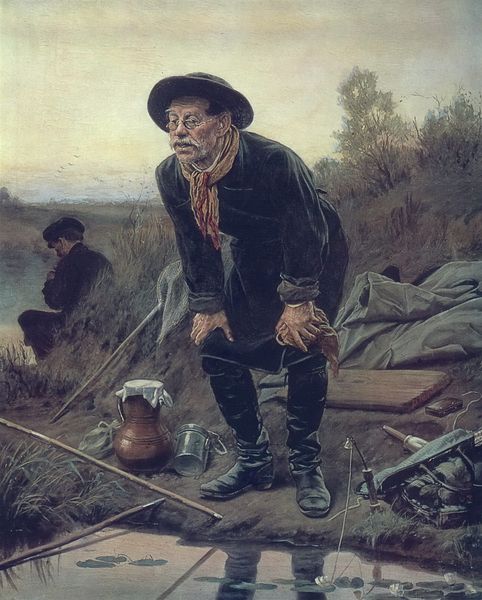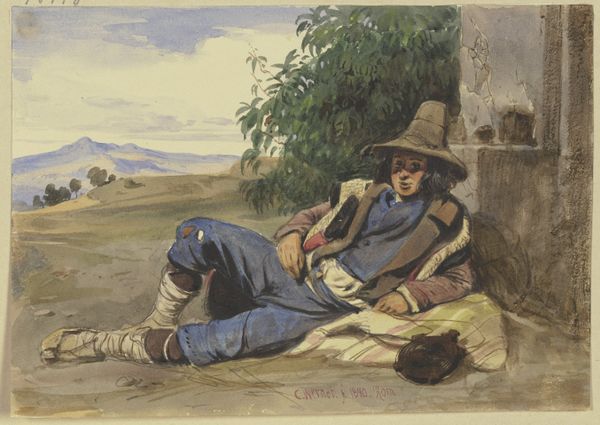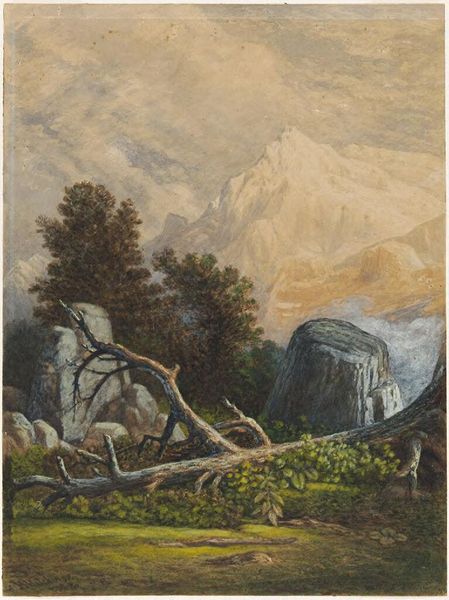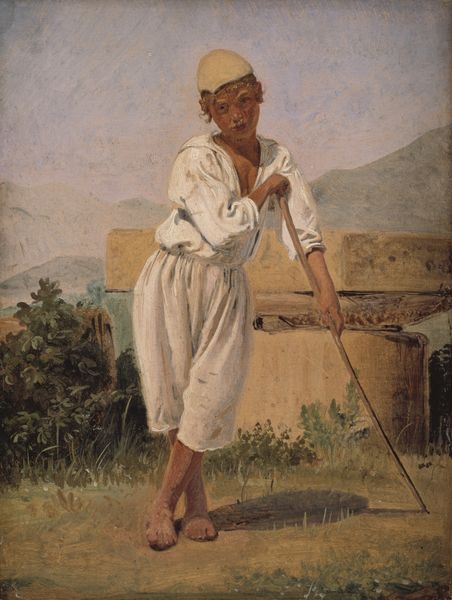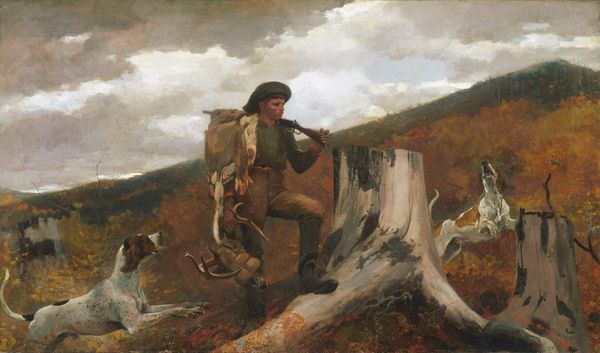
oil-paint
#
abstract painting
#
oil-paint
#
landscape
#
figuration
#
oil painting
#
surrealism
#
modernism
#
realism
Copyright: Arsen Savadov,Fair Use
Curator: This striking piece is entitled "Sputnik" by Arsen Savadov, painted in 2002. Savadov is a Ukrainian artist known for his surreal landscapes, often populated with enigmatic figures. Editor: It has an air of quiet melancholy about it. I'm immediately drawn to the textural qualities of the mountains, rendered with these wonderfully thick oil paint applications. You can really see the hand of the artist in the final result. Curator: Absolutely, the impasto creates a tactile, almost geological feel that grounds the otherwise dreamlike quality of the painting. And of course, that's exactly what you get from the medium as its traditionally applied: Oil. Speaking of grounding, consider Savadov's history during the collapse of the Soviet Union: this lends the artwork an especially fascinating socio-political dimension when considered within the historical context of post-Soviet Ukraine. Editor: I find the title ironic since the materiality of this painting feels so distant from any kind of modern, sleek, futuristic, subject matter. Sputnik was revolutionary; this almost feels anti-revolutionary with its traditional medium. It challenges this assumed divide of the pre and post-industrial revolution by blending a very familiar natural setting, such as mountains, with what is supposed to be a feat of human making—a literal Sputnik. Curator: The title definitely invites interpretation. Sputnik, the Soviet satellite, heralded a new era, while here, it seems almost weighed down by this antiquated terrain of earthy tones and melancholic aura. We also must consider how this lands, conceptually speaking, since Savadov's works have, historically, been part of collections often shown in popular European museums; these public art spaces also come with a socio-historical burden. Editor: What interests me further is how Savadov merges craft with his unique painterly gestures in how it affects reception—since its production has bearing on reception; its existence is also, somewhat, defined by museums that end up housing such artwork. Curator: Indeed. It serves as a potent reminder that the seemingly disparate realms of technology, nature, history, and institutions are intertwined— and that oil on canvas has maintained a presence alongside ever-changing technological advancements. Editor: It definitely provokes reflection on our relationship to materiality. Curator: And also on how art, society, and power reflect upon each other through history.
Comments
No comments
Be the first to comment and join the conversation on the ultimate creative platform.
